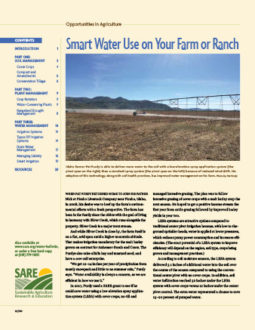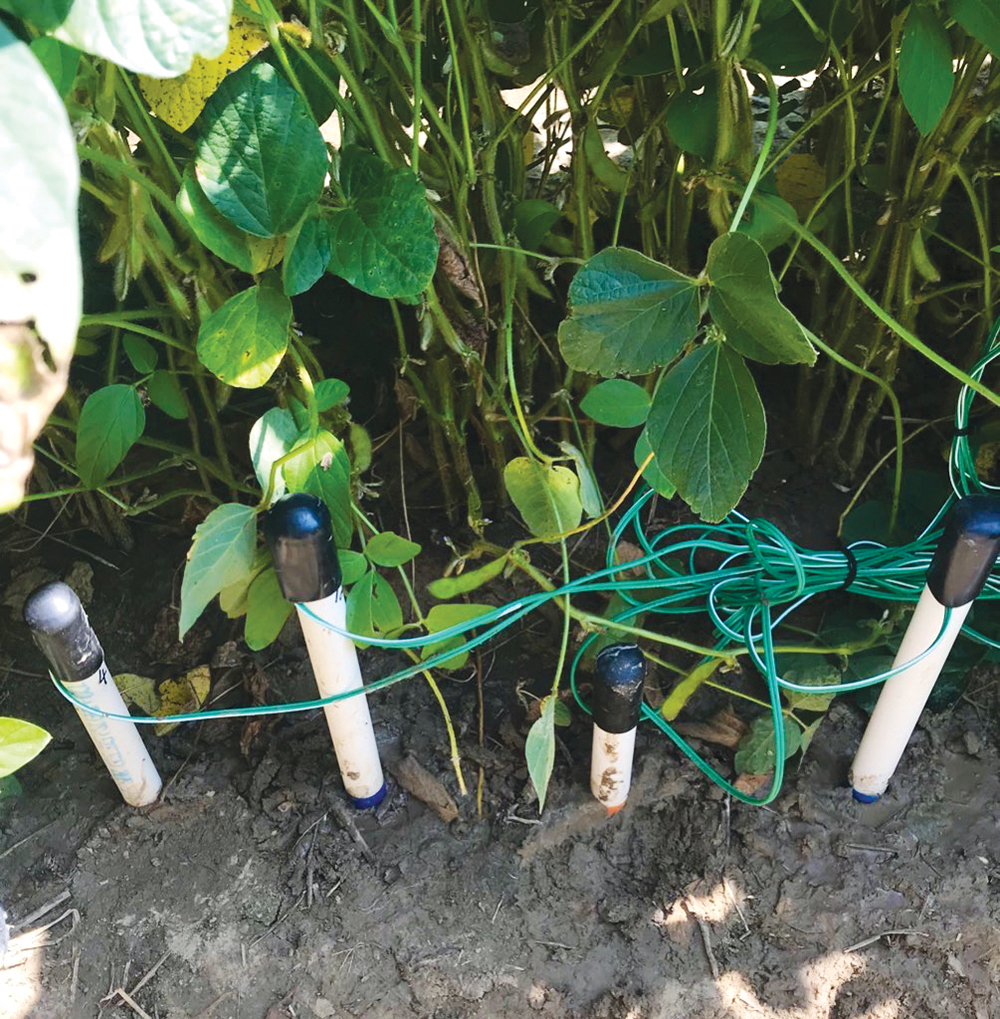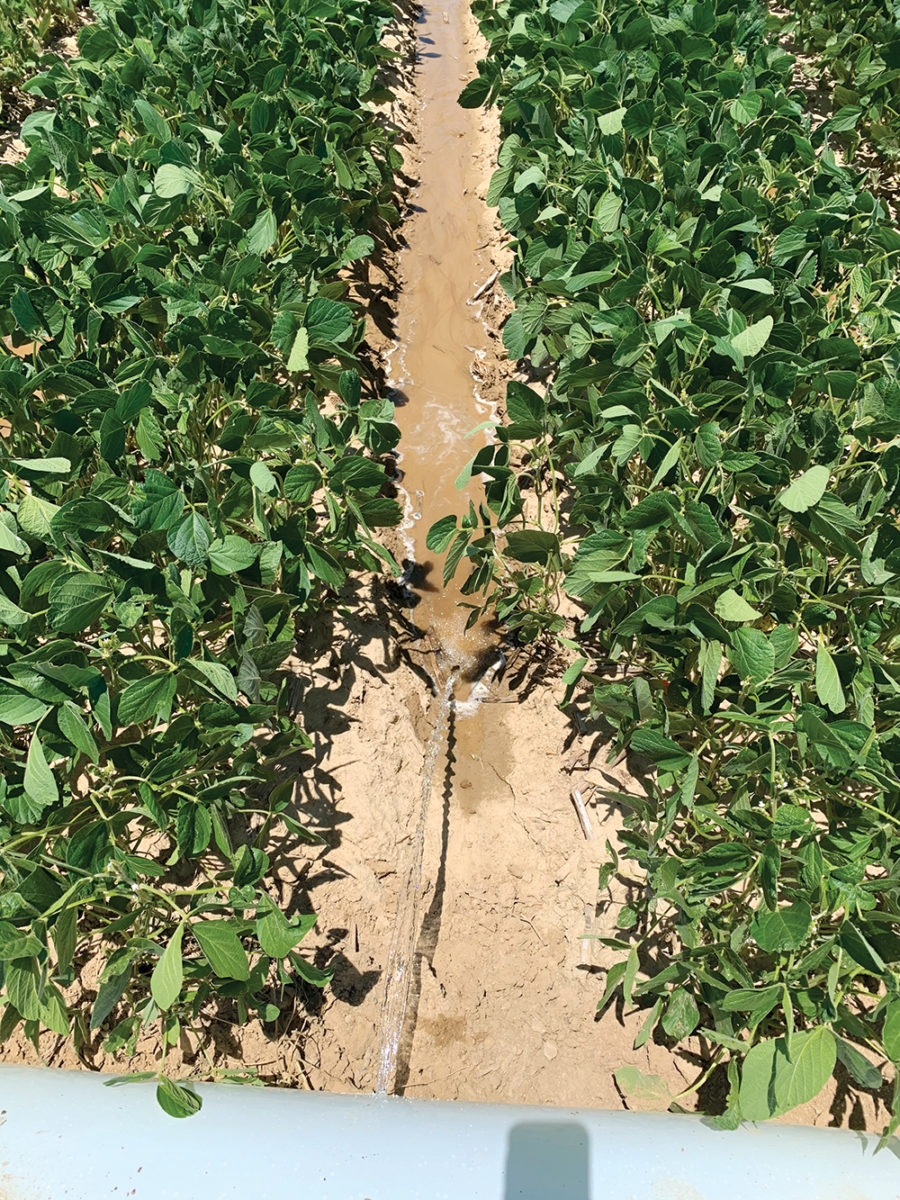Furrow irrigation supplies water to crops through shallow, evenly spaced furrows. University of Missouri Extension describes it as, “parallel beds usually spaced 30–38 inches apart. Water flows from a pump in lay-flat plastic pipes with holes in them to obtain desired flow rate.”
Though furrow irrigation is not very efficient on its own, the economics of it are attractive to farmers given little capital investment other than possible land grading. About two-thirds of Mississippi’s crop acres are irrigated, and more than 80 percent of them use furrow irrigation. During the last few years, Mississippi farmers have upgraded to technology tied to smartphones and computers.

Soil moisture sensors 
Furrow irrigation system
“We have demonstrated in the Delta region that combining furrow irrigation with technological advances, such as computerized hole size selection, irrigation timing using a soil water balance, and sensors for real-time feedback of plant and soil moisture conditions, can produce significant water savings.”
Curt Lacy, Mississippi State, Miss.
Lacy and other Mississippi State Extension staff used a SARE grant to educate farmers on how to reduce water use through adoption of improved furrow irrigation management. On-farm demonstrations of the three tools validated practices, improved efficiency and uniformity, and saved water:
- Right-size holes are created by putting information regarding elevation and flow rates into a computer program. Holes are punched into pipes for uniform water distribution.
- Soil moisture sensors signal when to start and stop irrigation, and reduce water use.
- Surge irrigation valves are used to increase application efficiency.
Research shows that utilizing soil moisture sensors, computerized hole selection and surge irrigation in corn decrease total water applied by 39.5 percent while increasing corn grain yield by 6.5 bushels per acre and irrigation water use efficiency by 51.3 percent. Net returns above irrigation costs rose from $25 to $40 per acre, according to Drew Gholson, a Mississippi State Extension irrigation specialist. Soybean returns and yield were unchanged as water use was reduced by 21 percent and water use efficiency increased 36 percent.
“More than 18 trials showed statistically significant improvement in water use efficiency,” says Gholson. “Soil moisture sensors allowed farmers to prolong irrigation as long as possible without affecting crop development. Farmers should work with local Extension specialists on trigger thresholds best for their areas and on crop growth stages vulnerable to timely water application.”


